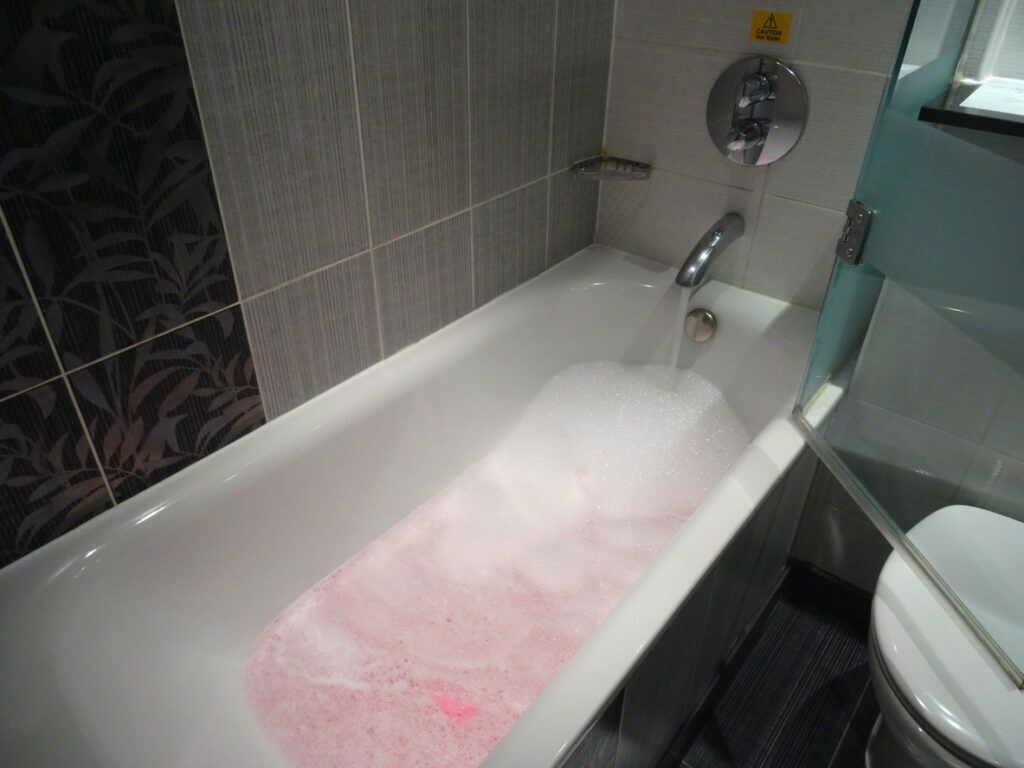We've come across the article on What to Do if Sewage Starts Coming Up Through Your Bathtub down the page on the net and believe it made sense to quickly share it with you over here.

Sewer back-up in the bath tub can be a traumatic and unhygienic issue for any kind of home owner. Not just is it bothersome, but it also presents severe wellness threats and indicates underlying problems with the plumbing system. Understanding why sewer is showing up with the bath tub is critical for taking suitable action to resolve the trouble successfully.
Intro to the Issue
Typical Reasons for Sewer Backup
Obstructions in the Sewer Line
Among the most typical sources of sewer backup is a blockage in the drain line. This can take place as a result of the buildup of debris, grease, or foreign items in the pipelines, stopping proper flow and triggering sewage to back up into your bathtub.
Tree Root Intrusion
Tree origins looking for moisture and nutrients can penetrate sewer lines via small cracks or joints. Gradually, these roots can grow and increase, triggering significant damage to the pipes and resulting in sewer backup concerns.
Understanding the Problem
When sewer starts backing up into the bath tub, it's a clear sign of an issue with the drainage system. The wastewater that ought to be streaming far from your home is rather finding its way back into your living space, which can result in substantial damage and carcinogen.
Potential Reasons
Numerous variables can add to sewage backup in the bathtub. From clogs in the sewer line to issues with the plumbing infrastructure, identifying the source is crucial for finding an option.
Aging Facilities
Older homes might have dated plumbing systems that are more susceptible to corrosion, splits, and wear and tear. As pipelines age, they come to be a lot more susceptible to leaks and clogs, raising the probability of sewage back-up occurrences.
Heavy Rainfall or Flooding
During periods of heavy rainfall or flooding, the drain system might end up being overwhelmed with excess water, creating backups and overflows. This can cause sewer backing up into bath tubs and other components inside the home.
Indications of Sewer Backup
Foul Odors
Unpleasant smells originating from drains or components, particularly in the bathroom, may suggest sewer back-up issues. These odors are often solid and persistent, signaling a problem that requires immediate focus.
Slow Draining Fixtures
Bath tubs, sinks, and commodes that drain pipes gradually or not whatsoever could be experiencing sewage back-up. If several fixtures are affected simultaneously, it's most likely that the problem stems from a typical factor, such as the primary sewage system line.
Gurgling Noises
Unusual gurgling or bubbling noises originating from drains pipes when water is running somewhere else in your home are a sign of air entraped in the plumbing system. This air accumulation can result from sewage backup and should be investigated promptly.
Wellness Dangers Connected With Sewer Back-up
Contamination of Water
Sewer backup can contaminate the water in your home, presenting a severe health and wellness danger to you and your family members. Exposure to polluted water can lead to intestinal concerns, skin infections, and other illnesses.
Mold and mildew Development
Moisture from sewage back-up can create optimal problems for mold growth in your home. Mold spores can intensify respiratory problems and create allergic reactions in delicate people, making timely cleanup essential.
Spread of Condition
Sewer has dangerous germs, viruses, and bloodsuckers that can cause a series of illness, consisting of liver disease, cholera, and gastroenteritis. Entering contact with sewer or polluted surface areas places you in jeopardy of infection.
Tidying up After Sewage Backup
Sanitation Procedures
Thoroughly disinfect and sterilize affected locations after sewer back-up to eliminate dangerous microorganisms and stop mold growth. Usage proper cleansing products and safety gear to guarantee safe and efficient cleanup.
Reconstruction of Influenced Areas
Repair any type of damage to flooring, wall surfaces, or fixtures caused by sewer back-up. Depending upon the extent of the damages, you may require to change carpeting, drywall, or various other products to restore your home to its pre-loss condition.
Immediate Actions to Take
Turning Off Water
In the event of sewage back-up, it's essential to turn off the water to prevent more contamination and damages. Locate the primary water shutoff valve in your house and shut it off up until the issue can be dealt with.
Contacting an Expert Plumber
Managing sewage backup is not a DIY task. Call a licensed plumber with experience in managing sewage-related concerns to assess the situation and carry out needed repair services or cleanings.
Staying Clear Of Contact with Contaminated Water
Until the sewage backup is resolved, avoid contact with contaminated water to prevent the spread of microorganisms and virus. Put on protective gear if you should be in the affected area and clean your hands completely afterward.
Preventive Measures
Normal Maintenance of Sewer Lines
Schedule normal evaluations and upkeep of your sewage system lines to identify and address potential concerns prior to they intensify into major issues. This can include cleaning debris, inspecting for tree origin intrusion, and fixing any damaged pipes.
Mounting Backwater Shutoffs
Consider setting up bayou valves in your plumbing system to avoid sewage from receding right into your home during periods of heavy rainfall or flooding. These valves instantly close when water starts backing up, safeguarding your residential or commercial property from contamination.
Correct Disposal of Home Waste
Prevent purging anything apart from toilet paper and human waste down the toilet to avoid blockages and obstructions in the sewer line. Dispose of grease, oil, and other household chemicals properly to reduce the risk of plumbing problems.
Why Is Water Backing Up in My Bathtub When I Flush My Toilet?
What to do about a sewer line clog
First, don’t bother with plunging. No amount of plunging will dislodge the clog in a sewer line. The clog is too far away. Plungers are for clogs in the toilet itself, not the sewer line. Plus, the most likely causes of a sewer clog are:
Tree roots Flushed toys or feminine products Grease buildup Those items don’t move easily. And in the case of tree roots, the roots need to be cut out of the pipe and the pipe will need to be repaired.
You’ll need a closet auger. A closet auger is a type of plumber’s snake with a protective cover to keep from scratching the delicate porcelain toilet. If the clog is further down, you may need to remove the toilet or use one of your cleanouts to get to the clog.
We also recommend doing a video inspection of the drain to ensure that the cause of the clog has been completely removed. Otherwise, you could have the same problem again in a few days or weeks.
https://mspplumbingheatingair.com/blog/why-is-water-backing-up-in-my-bathtub-when-i-flush-my-toilet

Do you really like more info about ? Create a review further down. We will be happy to listen to your opinion about this write up. In hopes that you visit us again in the near future. Appreciated our write-up? Please quickly share it. Let others check it out. I take joy in reading our article about Water Coming up Bathtub Drain.
Click Here